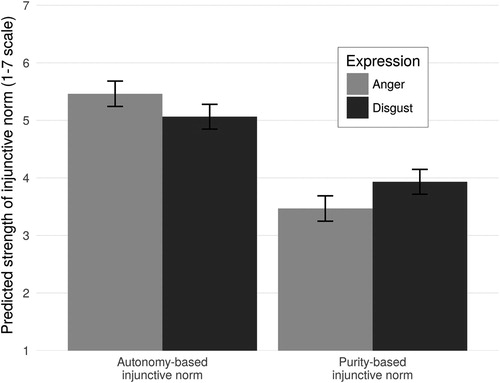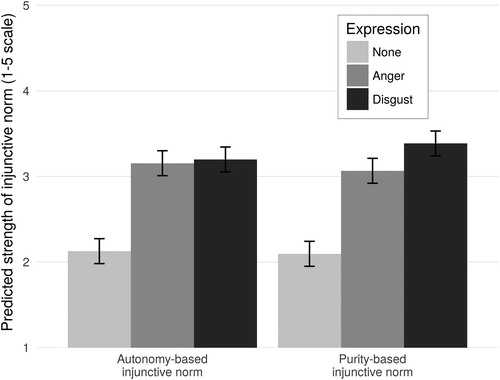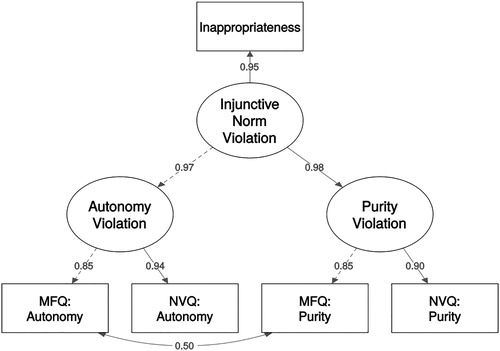Figures & data
Table 1. Descriptive statistics and simple effects for the main dependent measures depending on condition in Study 1.
Figure 1. Estimated strength of inferred autonomy-based and purity-based injunctive norms depending on emotion expressed about a behaviour (Study 1). Prediction is based on model coefficients; error bars represent 95% confidence intervals.

Table 2. Descriptive statistics for the main variables in Study 2 and their zero-order inter-correlations.
Figure 2. Estimated strength of inferred autonomy-based and purity-based injunctive norms depending on emotion expressed about a behaviour (Study 2). Prediction is based on model coefficients; error bars represent 95% confidence intervals.

Table 3. Means, SDs (in brackets) and zero-order correlations of the main measures in Study 3.
Figure 3. Estimated strength of inferred autonomy-based and purity-based injunctive norms depending on emotion expressed about a behaviour (Study 3). Prediction is based on model coefficients; error bars represent 95% confidence intervals.

Figure 4. Confirmatory Factor Analysis in which moral violations are subtypes of injunctive norm violations (standardized coefficients) for Study 3. MFQ: Moral Foundations Questionnaire (Graham et al., Citation2011). NVQ: Norm violation questionnaires as developed for this article. Model fit statistics: χ2(2) = 1.02, χ2/df = 0.51, CFI = 1.00, TLI = 1.01, RMSEA = 0.00.

